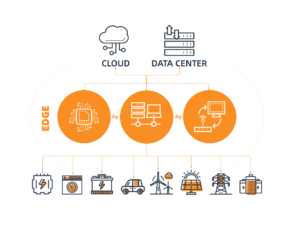In the rapidly evolving field of edge computing, two groundbreaking technologies, TinyML and OpenMV, are converging to redefine the boundaries of machine vision and artificial intelligence. This synergy not only enhances the capabilities of IoT devices but also paves the way for innovative applications that were previously unimaginable.
Introduction to OpenMV Cam
The OpenMV Cam is a small, yet powerful, microcontroller board specifically designed for implementing machine vision applications with ease. It enables users to execute a wide array of real-time image processing tasks right at the edge. The simplicity and efficiency of OpenMV Cam make it an ideal choice for hobbyists, educators, and professionals looking to explore the world of computer vision without the need for cumbersome hardware setups.
OpenMV Development Environment
Central to the ease of use of the OpenMV Cam is its development environment, OpenMV IDE. This integrated development environment streamlines the process of writing, testing, and deploying vision applications on the OpenMV Cam. With its intuitive interface, developers can swiftly write Python scripts to control the camera, process images, and interact with different sensors and actuators. The OpenMV IDE is designed to lower the barrier to entry for machine vision projects, making it accessible to a broader audience.
Detecting Elements in Images with OpenMV
One of the core capabilities of the OpenMV Cam is its ability to detect various elements within images. Utilizing simple Python scripts, developers can program the OpenMV Cam to recognize colors, faces, QR codes, and even track motion. This is achieved through a combination of onboard algorithms and the flexibility of Python scripting, allowing for complex image processing tasks to be executed directly on the device.
Sample Code Analysis
Consider a basic example where the OpenMV Cam is used to detect and outline faces in a video feed. The script would involve initializing the camera, setting up a Haar Cascade classifier for face detection, and iterating over each frame to identify faces. The detected faces could then be highlighted with rectangles drawn around them. This example illustrates how OpenMV Cam simplifies incorporating machine vision into projects, enabling real-time processing without the need for external computing resources.
import sensor, image, time
# Initialize the camera sensor
sensor.reset()
sensor.set_pixformat(sensor.RGB565)
sensor.set_framesize(sensor.QVGA)
sensor.skip_frames(time=2000)
# Load the Haar Cascade for face detection
face_cascade = image.HaarCascade("frontalface", stages=25)
print("Loaded Haar cascade")
while(True):
img = sensor.snapshot()
# Detect faces in the image
faces = img.find_features(face_cascade, threshold=0.75, scale_factor=1.25)
# Draw rectangles around detected faces
for x, y, w, h in faces:
img.draw_rectangle(x, y, w, h)what is TinyML? How Does It Work?
TinyML, or tiny machine learning, refers to the field of deploying machine learning models on tiny, resource-constrained devices such as microcontrollers and other low-power hardware. This approach enables smart functionalities in devices with limited processing power, memory, and energy consumption. Key aspects of TinyML include:
• Efficiency: Models are optimized for minimal resource usage, allowing them to run on devices with limited capabilities.
• Low Power Consumption: Essential for battery-operated devices, ensuring long operation times without frequent recharging.
• Real-Time Processing: Enables immediate data processing and decision-making directly on the device, reducing latency.
• Applications: Common in IoT devices, wearables, smart sensors, and other embedded systems used in various industries like healthcare, agriculture, and consumer electronics.
TinyML is gaining traction as it brings advanced machine learning capabilities to everyday objects, enabling smarter and more responsive environments. With machine learning applications expanding, TinyML plays a crucial role in enhancing device intelligence and connectivity.
The Relationship Between OpenMV and TinyML
The convergence of OpenMV and TinyML opens up a new frontier in edge computing. TinyML brings the power of machine learning to microcontrollers, allowing for intelligent data processing capabilities that significantly enhance the functionalities of OpenMV Cam. By integrating TinyML algorithms, OpenMV Cam can perform not just basic image processing tasks but also complex analyses like predictive maintenance, advanced pattern recognition, and even emotional detection in real-time, all at the edge. This synergy enables developers to create more sophisticated, autonomous applications that are both power-efficient and capable of operating in environments with limited connectivity.
Future Trends
The collaboration between OpenMV and TinyML signifies a leap forward in edge AI technologies. As these technologies continue to evolve, we can anticipate several future trends.
Firstly, there will be an increase in the deployment of AI-driven applications in remote and inaccessible areas, where connectivity is a challenge.
Secondly, the emphasis on privacy and data security will drive more data processing to the edge, reducing the need for data to travel back and forth to the cloud.
Lastly, the democratization of AI and machine vision technologies will enable a broader range of creators and innovators to develop applications that can solve real-world problems in novel and impactful ways.
The integration of TinyML with OpenMV heralds a new era of intelligent edge computing. This combination not only makes it easier for developers to bring their machine vision projects to life but also extends the capabilities of microcontrollers beyond simple tasks. As we look to the future, the potential applications of this technology are vast and varied. From environmental monitoring and agricultural optimization to healthcare and industrial automation, the possibilities are as limitless as the imagination of the developers wielding these powerful tools.
By harnessing the combined strengths of TinyML and OpenMV, we stand on the brink of a technological revolution that will make our devices smarter, our applications more efficient, and our world more connected. As we continue to explore and innovate within this space, the future of edge computing looks brighter than ever.
Recommended Blogs
Still have questions about Edge AI?
???? Contact us for expert advice!



